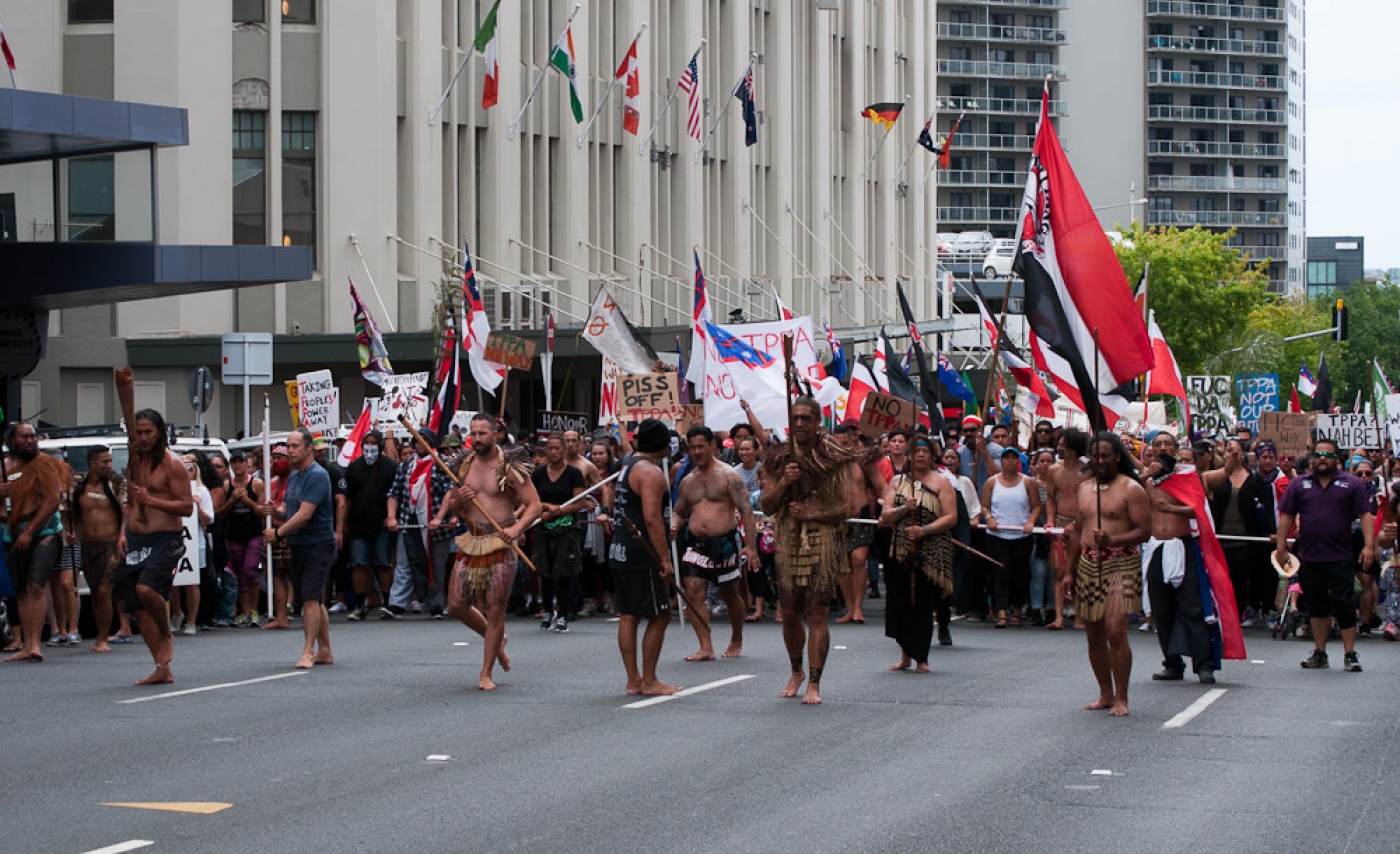
by Deep Green Resistance News Service | Feb 19, 2016 | Colonialism & Conquest, Indigenous Autonomy
Featured image: Maori protests on February 4th signing of the TPP in Auckland, New Zealand. Photo by Dominic Hartnett
By Cultural Survival
The Trans-Pacific Partnership agreement, if approved, would be the largest trade agreement in history involving 11 countries including the United States, Australia, Brunei, Canada, Chile, Japan, Malaysia, Mexico, New Zealand, Peru, Singapore, and Vietnam.
Cultural Survival staff caught up with the United Nations Special Rapporteur on the Rights of Indigenous Peoples, Victoria Tauli-Corpuz, to discuss the trade deal’s implications for Indigenous Peoples in these countries, based on her recent research and report on this topic.
Vicky Tauli-Corpuz explains that the TPP agreement is about liberalizing the trade and investment regime in order to allow for more fluidity when trading among countries. However, she shared her concern that in this agreement investor’s rights may be more protected than the rights of the Indigenous Peoples; the investment clause would trump social and environmental rights, including human rights.
“You cannot have a situation where investor’s rights are more protected than Indigenous rights,” she explained.
Ms. Tauli-Corpuz also used the example of Bolivia, where the government had listened and acted upon Indigenous protests against a Canadian mine on their lands, by attempting to cancel the concession. Bolivia was then sued by the Canadian corporation that owned the mine. The mining corporation won and the Bolivian government was left to pay millions of dollars to the company for lost profits. She noted that most developing countries lose in arbitration with corporations because they simply do not have the lawyers to support them. Corpuz warned, these are the types of situations that occur when investors are prioritized over the local and Indigenous citizens.
The TPP was negotiated in secret, and its text was only released via Wikileaks until it was already negotiated by trade ministers of the respective countries. According to Tauli Corpuz, this secrecy is a violation of Indigenous Peoples right to Free, Prior, Informed Consent on policies that may affect them.
“In situations where Indigenous Peoples have the right to Free, Prior, Informed Consent before any company comes to their community to invest, that kind of right has to be respected and that has to be stated and pursued by the countries who are hosting this investment,” she warned.
She urges for deeper transparency in trade deals like the TPP, so that Indigenous Peoples can be aware of the content of these trade agreements so that they can participate and decide whether or not to consent. In order to achieve this there must be a call to action to create a more participatory negotiation process rather than the exclusive and secretive one that has occurred. If the TPP is passed within each country’s legislature, it would deregulate social standards that are put in place and can take states themselves to court for attempting to protect social conducts such as protecting the rights of Indigenous Peoples.
The Special Rapporteur also recommends that extra attention be made to Exceptions section of the trade agreement. For example, specifically naming FPIC and Indigenous Peoples rights in the stipulations of how the the trade agreement would play out within each country. It is the responsibility of each country to identify and present exceptions so that they can be held accountable during arbitration panels. For example, New Zealand did manage to include an exception in TPP article 29.6 that references the rights of the Maori people, however activists have argued that the wording of the exception allows too many loopholes to provide legitimate protection.
On February 4th, 2016, the TPP was signed by trade ministers of 11 countries, in a formal ceremony in New Zealand. But the deal must still be approved within the legislatures of each country for it to be put in place: The TPP will not come into effect until a requisite number of original signatories ratify the agreement.
Maori leaders in New Zealand held massive protests against the signing ceremony, saying that they do not give their consent to the deal and that the it violates the Treaty of Waitangi and the 1835 Declaration of Independence of New Zealand. Kingi Taurua, a prominent Nga Puhi elder at Waitangi’s Te Tii Marae, has sent a formal notice of veto of the Trans-Pacific Partnership agreement to the embassies and trade departments of its proposed partner countries. They argued that the New Zealand government does not have “due authority” to sign the TPP without the agreement of Maori elders, “which [agreement] has not been given.”
In the United States, the next step is the drafting and consideration of a bill in Congress to implement the agreement, which will also serve as U.S. ratification of the international trade deal. Some anticipate this vote to take place after the 2016 elections in November.
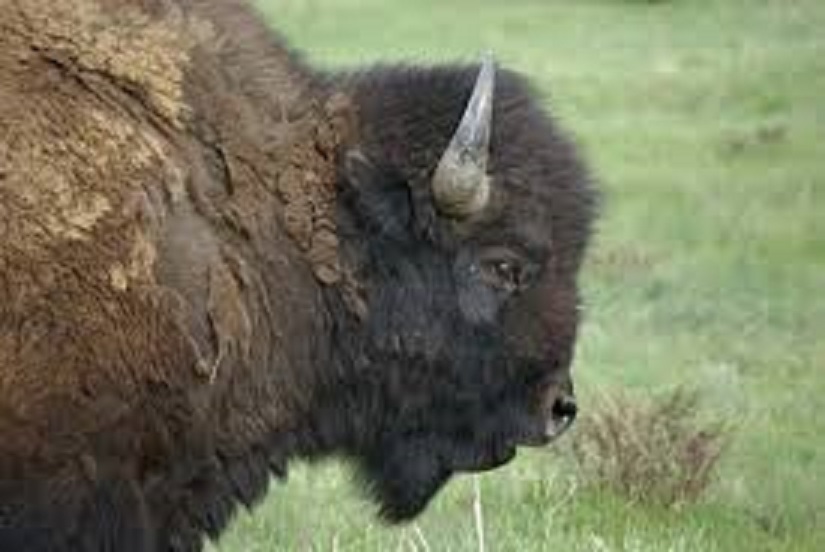
by Deep Green Resistance News Service | Feb 18, 2016 | Biodiversity & Habitat Destruction
By Deep Green Resistance
Wild Bison are an icon of what has been destroyed by civilization, and this species is now on the brink in the wild. Almost all bison left today are cross-breeds held in confinement. There are only a few wild, free ranging bison herds left on the planet, and their numbers are small. Every year, the Park Service — at the behest of ranchers — round up, quarantine, harass, and kill many of the wild bison who live in and around Yellowstone National Park. We stand with grassroots land defenders such as the Buffalo Field Campaign in calling for an immediate end to this atrocious treatment of wild bison. Instead of quarantine, these creatures need room to roam. Instead of harassment, they need our assistance in growing once again to their historical numbers.
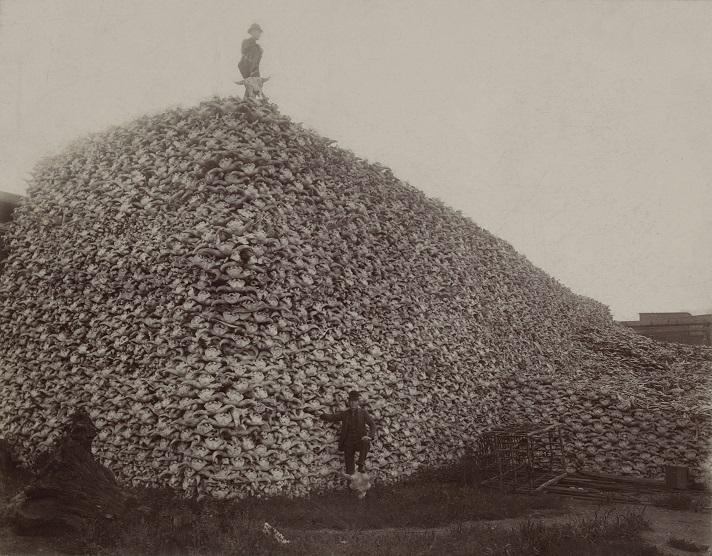
From Buffalo Field Campaign:
Yellowstone National Park has released an Environmental Assessment (EA) for a fifty-year quarantine program which seriously threatens America’s last wild, migratory bison population. Unfortunately there is very little in this EA for bison advocates to support, as even the “no action” alternative maintains the Park’s ongoing capture-for-slaughter program. Comments are due by midnight MDT February 29, 2016. (This is a new, extended deadline.)
Quarantine domesticates wild bison, subjects them to artificial selection and commercial management practices and treats them like livestock. Quarantine is an insult to First Nations buffalo cultures with strong cultural, spiritual, and traditional ties to wild, migratory buffalo in and around Yellowstone. Quarantining wild, migratory bison and dooming them to a life behind fences ignores the critical keystone relationship between wild bison and their natural prairie and grassland communities. Migration is one of the buffalo’s strongest, most significant gifts to a healthy landscape. Quarantine reduces buffalo to a domesticated state, and is not appropriate for wildlife. Quarantine, which imposes a state of control and surveillance over wild bison, is the direct result of the livestock industry’s intolerance. Quarantine is a toxic mimic of natural restoration, a program in which humans manipulate the wild and free to suit their own selfish agendas. Quarantine does not end slaughter, it begins with it, ripping buffalo families apart and orphaning calves who spend the rest of their lives behind fences.
Yellowstone’s ongoing capture-for-slaughter and fifty-year quarantine plan will result in extremely adverse cumulative impacts, and we need to force the agency to seriously and honestly review the best available scientific information in a comprehensive Environmental Impact Statement (EIS).
Recent history has already shown that quarantine does not work for wild bison. The Quarantine Feasibility Study that began in 2005 resulted in wild Yellowstone buffalo being commercially owned for profit, while some of the buffalo who went to Ft. Peck died in a horrible fire because they could not escape their enclosure, and half of the herd that was transferred to Ft. Belknap died because they could not escape their enclosure to find fresh water. Wild bison do not belong behind fences, they are a nation unto themselves who evolved to migrate, wild and free!
TAKE ACTION! Please use the sample letter below only as an example, and in your own words, address the adverse impacts of quarantining wild bison and the Park’s ongoing capture for slaughter mismanagement scheme. Don’t allow Yellowstone National Park to domesticate wild, migratory bison!
HOW TO SEND YOUR COMMENTS: Respondents are encouraged to submit their comments online through the Planning, Environment and Public Comment (PEPC) website at www.parkplanning.nps.gov/BisonQuarantine. Comments may also be hand-delivered to the park administration building, or mailed to: Superintendent, Yellowstone National Park, Wyoming, 82190. Comments will NOT be accepted by fax, e-mail, or in any manner other than those specified above.
SAMPLE LETTER – Please edit with your own remarks! See above for instructions on how to submit your comments. Due by February 29, 2016.
Superintendent Dan Wenk
Yellowstone National Park
Attn: Bison Quarantine EA
P.O. Box 168
Yellowstone National Park, Wyoming 82190
RE: Comments on Yellowstone Bison Quarantine Program EA
Dear Superintendent Wenk,
Thank you for the opportunity to comment on Yellowstone’s quarantine environmental assessment (EA). I am strongly opposed to Yellowstone’s proposed fifty-year quarantine plan as well as the Park’s ongoing capture-for slaughter operations. As an advocate for wild, migratory bison, I find it impossible to support quarantine in Yellowstone or elsewhere, or your no-action alternative to continue capturing wild buffalo for slaughter.
Yellowstone’s proposed fifty-year quarantine plan, as well as the Park’s ongoing capture-for-slaughter operations have significant cumulative negative impacts, which requires your agency to seriously and thoroughly review the best available information in a comprehensive Environmental Impact Statement.
The U.S. Congress never intended for wild buffalo in Yellowstone to be declared “surplus” and did not authorize the Secretary of the Interior to remove wild buffalo as “surplus” for quarantine. By regulation, Yellowstone National Park is prohibited from removing “surplus” wild buffalo from the population in Yellowstone “when the animals are to be slaughtered, or are to be released without adequate protection from premature hunting.” 36 C.F.R. § 10.3(d) (2015).
Yellowstone’s fifty-year quarantine program is in direct violation of the Organic Act and National Park Service policies, as it includes capturing wild bison for quarantine with potential recipients including agricultural or commercial producers, reducing ecologically extinct wild bison to livestock.
Wild bison are further adversely impacted by Yellowstone’s proposed quarantine plan and ongoing capture-for-slaughter operations, which aim to reduce America’s last continuously wild herds to a mere 3,000 animals, and maintain this low population, making wild bison extremely vulnerable by threatening their natural immunity to introduced diseases from cattle and elsewhere, including brucellosis. Such poor management practices increase the risk of wild bison becoming more vulnerable to various diseases as strains become more virulent and persistent. Further, the population target of 3,000 is based on livestock industry politics and lacks scientific or ecological basis.
In recent history, Yellowstone’s participation in the state-federal Quarantine Feasibility Study resulted in the commercialization and privatization of wild bison, making a commodity of our nation’s valued wildlife. It resulted in the domestication of wild bison originating from Yellowstone. All of the wild bison who survived the quarantine feasibility study have been reduced to private livestock or meat behind fences, many of which died throughout the process, through transport to other quarantine facilities, or who suffered horrible deaths by fire and dehydration as a result of their confinement.
The recent quarantine program has been a failure. There is no indication that quarantine with the costly, restrictive, and burdensome requirements of the U.S. Department of Agriculture will in any way lead to the recovery of ecologically extinct wild bison as a wildlife species anywhere in the country. Quarantine domesticates. It harms and degrades the wild integrity of America’s last wild bison population and subjects wild bison to commercial management practices and artificial selection.
Indigenous people of North America have held strong cultural and spiritual ties to wild, migratory buffalo for tens of millennia. Some of these relationships are so deep that the people consider the buffalo to be actual relatives. “Offering” indigenous buffalo cultures the return of their relatives through quarantine and capture-for-slaughter can be viewed as a continuation of the U.S. government’s assimilation program, which aims to make cattle out of wild, migratory bison, and livestock producers out of traditionally nomadic indigenous buffalo cultures.
Ongoing capture-for-slaughter operations and the proposed quarantine program are a violation of the treaty rights held by more than twenty-five sovereign, indigenous nations. The harmful programs of hazing, quarantine, and slaughter prevent wild, migratory bison from restoring themselves on their native landscape, including open and unclaimed public lands. These nation-to-nation treaties, which the federal government has a legal obligation to honor, hold that these indigenous cultures have a sovereign right to hunt, gather, and hold ceremony on open and unclaimed lands. Sadly, wild, migratory bison are absent and unavailable on many of these lands due to these bison management practices.
Yellowstone’s fifty-year quarantine plan further harms wild, migratory bison because quarantine has adverse impacts on herd dynamics, social structure, and collective wisdom handed down through generations. Quarantine negatively modifies wild bison behavior in ways that are unnatural and harmful, including continuing pressures of domestication, conditioning to human manipulation, and artificial selection — all tools for managing livestock, not wildlife. Wild, migratory bison are able to take care of themselves, with no cost or need of interference from humans. Wild bison are able to create and manage their own habitat, while bison behind fences invoke restrictive, costly, and burdensome requirements by the U.S. Department of Agriculture.
Yellowstone National Park’s voluntary agreement to adhere to the highly controversial Interagency Bison Management Plan contradicts the mission of the National Park Service. The Park Service and other IBMP member agencies fail to operate using the best available science and information, falling back instead on expired information and misguided assumptions, in direct violation of the Park Service’s mandate.
Nearly 6,000 ecologically extinct, wild, migratory bison have been killed or eliminated from America’s last continuously wild population with direct and indirect participation from Yellowstone National Park, through capture-for-slaughter, quarantine, hazing fatalities, and the surrender of wild bison for scientific experiment. An independent population viability analysis must be conducted (and funded) by Yellowstone National Park to determine how management actions and consequent cumulative impacts threaten the long-term viability, diversity, integrity, and evolutionary potential of wild, migratory bison. It is also required that an impairment review be undertaken to determine the long-term and cumulative impacts of capture-for-slaughter operations and the proposed fifty-year quarantine program.
There is a win-win situation for wild, migratory bison and indigenous buffalo cultures that does not include the mass killing or domestication of wild bison: natural restoration through the simple and ancient natural phenomenon of migration. Migration corridors must be protected and made available to wild bison by federal, state, and public trust land management agencies, working with private landowners and tribal governments. The migration corridors in and around Yellowstone are a first priority, along with the protection of the bison themselves — both of which are denied under current management. When wild bison are protected and allowed to restore themselves throughout their native range, they will naturally return to the lands that are their birthright, lands they have been forcibly and lethally removed from, where indigenous buffalo cultures are ready to welcome them home.
Sincerely,
[Your name]
Read more at Buffalo Field Campaign. Help support BFC here.

by Deep Green Resistance News Service | Feb 13, 2016 | Male Violence, Movement Building & Support, Strategy & Analysis, Women & Radical Feminism
This is the second part of a series. Read the first part at Toward Strategic Feminist Action.
By Tara Prema / Gender is War
Developing an effective response to the worldwide crisis of male violence
Strategic Feminism is a framework for collective action against patriarchal violence. The framework is based on acknowledging that the struggle for women’s liberation can – and must – adapt the lessons of asymmetric conflicts, such as guerrilla uprisings against occupying armies. We can apply the lessons of successful insurgencies to our aboveground organizing. And we must do so. It is a matter of life and death: every minute, men rape, abuse, abduct, and murder girls and women. Time is short – we must prepare for worse still to come.
Strategic Feminism draws on the excellent analysis of asymmetric conflict in Deep Green Resistance: A Strategy to Save the Planet. In Part One, we discussed the crisis of male violence against women and sketched a solution based on organizing for action in our communities. Here in Part Two, we look at more ways to begin and sustain our work for radical social change.
We call this model Strategic Feminism because it’s outcome-oriented and focused on creating a movement that addresses the material conditions affecting women’s lives.
Sustaining a movement: Feminism in collapse
How can we create a movement in a time of collapse? How do we come together as a force for change when individuals burn out, groups fall apart, and coalitions fracture? When feminists are fighting each other on questions of gender, motherhood, sexuality, and privilege?
And how to do we take these steps now, when every day brings more signs of cultural, economic, and environmental collapse? How do we adapt our strategies to a world order that is reeling from one crisis to the next? This is our challenge.
As radical women, we must pledge to protect each other and the places we love, just as women have done since the time they burned us as witches.
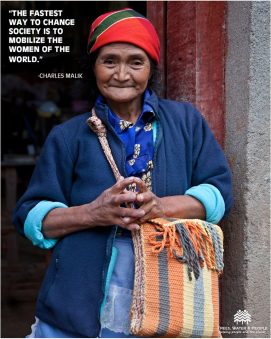 Keeping the spirit
Keeping the spirit
At the core of this movement, there is an intangible force with a measurable impact. It’s an attitude, a mindset, a determination that compels us to push back against oppression. It’s the warrior mindset, the stand-and-fight stance of someone defending her home and the ones she loves.
Many burn with righteous anger. This is important – anger lets us know when people are hurting us and the ones we love. It’s part of the process of healing from trauma. Anger can rouse us from depression and move us past denial and bargaining. It is a step toward acceptance and taking action.
Rewriting the trauma script includes asserting our truth and lived experiences, and naming abuses instead of glossing over them. It includes discovering (and rediscovering) that we can rely on each other instead of on men. It’s mustering the courage to confront male violence. But it’s not going to be easy.
Acknowledge and #NameTheProblem
We can’t fight a problem we can’t identify, especially when it is deliberately obscured. It’s not surprising that naming the problem has become a political act. And the problem is male violence against women. We shouldn’t have to say “she was raped” when we know that “men raped her.”
Reclaim what was taken from us
- Learning (and re-learning and reminding each other) that our bodies and spirits belong to us, we deserve to be safe, and we have the capacity to defend ourselves
- Fighting isolation and connecting with other women who have a similar fighting spirit
- Creating a culture of resistance to male violence
Taking action
Strategies are the paths to the goal. Tactics are the means to implement strategies. Part of a strategy for sustaining a movement is networks of peer support, mutual aid, and solidarity. We start by coming together with our peers, women who share the same goals and principles.
Goal: Develop a thriving network capable of effective action
Strategy: Find women allies and start a group
Tactics:
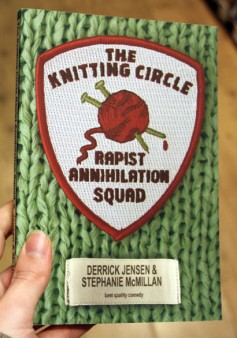 Start with a small circle: each one invite one.
Start with a small circle: each one invite one.- When you get an invitation, go!
- Use a petition or sign-on letter to gather potential recruits.
- Screen and interview volunteers.
- Discuss and write up a basis of unity
- Hold meetings, discussions, films, work parties, and benefit shows.
- Keep a signup sheet and a list of participants.
- Retain volunteers through appreciation and peer support.
- Raise money for projects and community campaigns.
Strategy: Start with an existing group
- Entryism – add members until your crew has a majority
- Headhunting – join in order to recruit members to your group
- Affinity group – organize an action team within the group
- Symbiosis – utilize the group’s resources and membership for your project
Strategy: Build a coalition
- Circulate a sign-on letter
- Organize against a common political enemy
- Host an event: A symposium, press conference, rally, or direct action
- Pledge to support and not publicly denounce each other
- Collaborate together on an ongoing project
Strategy: Keep each other safe and supported
- Have designated safe houses and emergency plans
- Set up a legal defence fund and legal team before they’re needed
- Create a mutual aid network so women activists can support each other
- Make and distribute an activist safety/security plan to stop online hackers and physical attackers
- Prioritize peer support and peer counseling, whether it’s formal or informal.
- Keep a “not wanted” list to weed out known disruptors
- Host group self-defense and security awareness trainings
Choosing our battles
How do we decide on a particular project, campaign, action or strategy? We can ask:
- Is it effective? What will it achieve?
- What are our goals (immediate and long-term )? How does this action lead there?
- Who is working with us?
- Do we have community support? From which communities?
- What decision-makers are we targeting?
- What are our strategies and tactics? (Legal, confrontational, revolutionary?)
- Do we have the resources? (People power, funds, vehicle?)
- How can we get the resources? (Recruiting, crowdfunding, direct appeals?)
- What are the possible negative outcomes? How can we mitigate the negatives?
Some actions and projects aren’t intended to lead to concrete results – they are symbolic in nature but still useful for boosting morale, getting media attention, and recruiting volunteers.
Male allies
Male allies can – and should – make substantial contributions to the movement. Consider asking women what we need to sustain our work, and then providing that without judgment or trying to exercise veto power. Men who take on ally roles should turn to other men for peer support and take time to debrief with them regularly.
Remember to regroup
Every campaign, project, and group will stall eventually. We invariably reach the point when it seems our efforts are going nowhere and our adversaries are dragging us down. This is when we must re-group and re-commit ourselves or fail. Every goal worth fighting for is going to face a serious backlash from those in power.
In spite of all our planning, our groups and coalitions still fall apart due to lack of unity, loss of commitment, burnout, and the divisive pressures of racism, classism, misogyny, and disruption from outsiders. Overall, things are not going to get better on their own. In the endgame of capitalism, the situation for women as a class worldwide is deteriorating at a fearsome rate. It’s up to us to prepare for the worst.
In the short term, this anti-feminist backlash is intensifying. Planning now is crucial. Some readers may not see the immediate need for this laundry list of tactics and strategies. But the day is coming when the need for community networks of trust will be urgent, because so much of what we rely on now has collapsed.
These notes come from unceded indigenous territory on the frontier of resistance to the western patriarchal invasion.
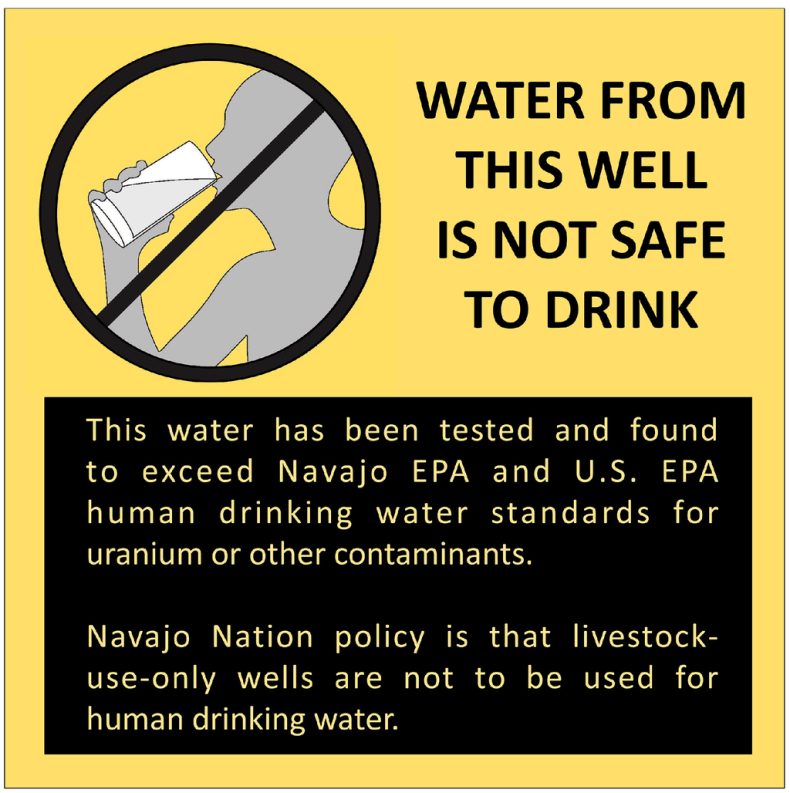
by Deep Green Resistance News Service | Feb 11, 2016 | Colonialism & Conquest, Toxification
Featured image: Figure from EPA Pacific Southwest Region 9 Addressing Uranium Contamination on the Navajo Nation
By Courtney Parker / Intercontinental Cry
Recent media coverage and spiraling public outrage over the water crisis in Flint, Michigan has completely eclipsed the ongoing environmental justice struggles of the Navajo. Even worse, the media continues to frame the situation in Flint as some sort of isolated incident. It is not. Rather, it is symptomatic of a much wider and deeper problem of environmental racism in the United States.
The history of uranium mining on Navajo (Diné) land is forever intertwined with the history of the military industrial complex. In 2002, the American Journal of Public Health ran an article entitled, “The History of Uranium Mining and the Navajo People.” Head investigators for the piece, Brugge and Gobel, framed the issue as a “tradeoff between national security and the environmental health of workers and communities.” The national history of mining for uranium ore originated in the late 1940’s when the United States decided that it was time to cut away its dependence on imported uranium. Over the next 40 years, some 4 million tons of uranium ore would be extracted from the Navajo’s territory, most of it fueling the Cold War nuclear arms race.
Situated by colonialist policies on the very margins of U.S. society, the Navajo didn’t have much choice but to seek work in the mines that started to appear following the discovery of uranium deposits on their territory. Over the years, more than 1300 uranium mines were established. When the Cold War came to an end, the mines were abandoned; but the Navajo’s struggle had just begun.
Back then, few Navajo spoke enough English to be informed about the inherent dangers of uranium exposure. The book Memories Come to Us in the Rain and the Wind: Oral Histories and Photographs of Navajo Uranium Miners and Their Families explains how the Navajo had no word for “radiation” and were cut off from more general public knowledge through language and educational barriers, and geography.
The Navajo began receiving federal health care during their confinement at Bosque Redondo in 1863. The Treaty of 1868 between the Navajos and the U.S. government was made in the good faith that the government – more specifically, the Bureau of Indian Affairs (BIA) – would take some responsibility in protecting the health of the Navajo nation. Instead, as noted in “White Man’s Medicine: The Navajo and Government Doctors, 1863-1955,” those pioneering the spirit of western medicine spent more time displacing traditional Navajo healers and knowledge banks, and much less time protecting Navajo public health. This obtuse, and ultimately short-sighted, attitude of disrespect towards Navajo healers began to shift in the late 1930’s; yet significant damage had already been done.
Founding director of the environmental cancer section of the National Cancer Institute (NCI), Wilhelm C. Hueper, published a report in 1942 that tied radon gas exposure to higher incidence rates of lung cancer. He was careful to eliminate other occupational variables (like exposure to other toxins on the job) and potentially confounding, non-occupational variables (like smoking). After the Atomic Energy Commission (AEC) was made aware of his findings, Hueper was prohibited from speaking in public about his research; and he was reportedly even barred from traveling west of the Mississippi – lest he leak any information to at-risk populations like the Navajo.
In 1950, the U.S. Public Health Service (USPHS) began to study the relationship between the toxins from uranium mining and lung cancer; however, they failed to properly disseminate their findings to the Navajo population. They also failed to properly acquire informed consent from the Navajos involved in the studies, which would have required informing them of previously identified and/or suspected health risks associated with working in or living near the mines. In 1955, the federal responsibility and role in Navajo healthcare was transferred from the BIA to the USPHS.
In the 1960’s, as the incidence rates of lung cancer began to climb, Navajos began to organize. A group of Navajo widows gathered together to discuss the deaths of their miner husbands; this grew into a movement steeped in science and politics that eventually brought about the Radiation Exposure Compensation Act (RECA) in 1999.
Cut to the present day. According to the US EPA, more than 500 of the existing 1300 abandoned uranium mines (AUM) on Navajo lands exhibit elevated levels of radiation.
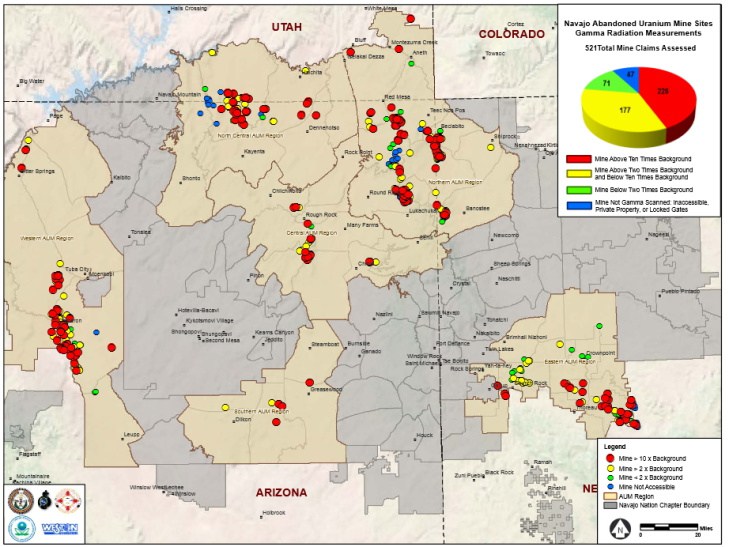
Navajo abandoned uranium mines gamma radiation measurements and priority mines. US EPA
The Los Angeles Times gave us a sense of the risk in 1986. Thomas Payne, an environmental health officer from Indian Health Services, accompanied by a National Park Service ranger, took water samples from 48 sites in Navajo territory. The group of samples showed uranium levels in wells as high as 139 picocuries per liter. Levels In abandoned pits were far more dangerous, sometimes exceeding 4,000 picocuries. The EPA limit for safe drinking water is 20 picocuries per liter.
This unresolved plague of radiation is compounded by pollution from coal mines and a coal-fired power plant that manifests at an even more systemic level; the entire Navajo water supply is currently tainted with industry toxins.
Recent media coverage and spiraling public outrage over the water crisis in Flint, Michigan has completely eclipsed the ongoing environmental justice struggles of the Navajo. Even worse, the media continues to frame the situation in Flint as some sort of isolated incident.
Madeline Stano, attorney for the Center on Race, Poverty & the Environment, assessed the situation for the San Diego Free Press, commenting, “Unfortunately, Flint’s water scandal is a symptom of a much larger disease. It’s far from an isolated incidence, in the history of Michigan itself and in the country writ large.”
Other instances of criminally negligent environmental pollution in the United States include the 50-year legacy of PCB contamination at the Mohawk community of Akwesasne, and the Hanford Nuclear Reservation (HNR) situated in the Yakama Nation’s “front yard.”
While many environmental movements are fighting to establish proper regulation of pollutants at state, federal, and even international levels, these four cases are representative of a pervasive, environmental racism that stacks up against communities like the Navajo and prevents them from receiving equal protection under existing regulations and policies.
Despite the common thread among these cases, the wave of righteous indignation over the ongoing tragedy in Flint has yet to reach the Navajo Nation, the Mohawk community of Akwesasne, the Yakama Nation – or the many other Indigenous communities across the United States that continue to endure various toxic legacies in relative silence.
Current public outcry may be a harbinger, however, of an environmental justice movement ready to galvanize itself towards a higher calling, one that includes all peoples across the United States, and truly shares the ongoing, collective environmental victories with all communities of color.
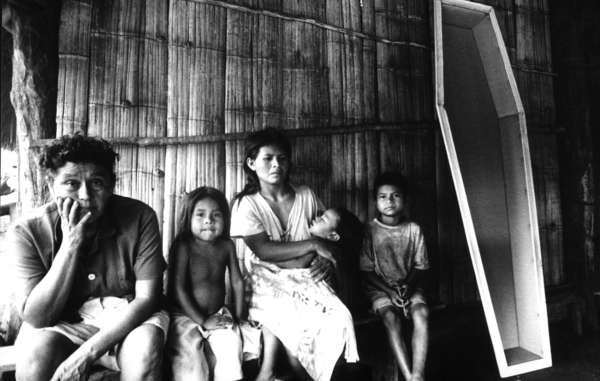
by Deep Green Resistance News Service | Feb 9, 2016 | Alienation & Mental Health, Colonialism & Conquest
Featured image: A bereaved Guarani family waiting beside a coffin. The wave of suicides that has struck the Guarani Indians in the last 20 years is unequalled in South America. Suicide is often seen as the only option by people forced from their land and into a way of life they did not choose. Photo © João Ripper/Survival
By Survival International
A new report published by Survival International reveals that the appalling suicide rate among the indigenous Guarani Kaiowá people of southern Brazil is the highest in the world.
The rate of self-inflicted deaths within the tribe is 34 times the Brazilian national average, and statistically the highest among any society anywhere on earth. Suicide rates among many other indigenous peoples such as Aboriginal Australians and Native Americans in Alaska also remain exceptionally high. This can be viewed as the inevitable result of the historical and continuing theft of their land and of “development” being forced upon them.
The report, “Progress can Kill,” exposes the devastating consequences of loss of land and autonomy on tribal peoples. As well as the shockingly high suicide rates among tribes, it also reveals high rates of alcoholism, obesity, depression and other health problems.
Particularly striking statistics include the sky-rocketing rates of HIV infection in West Papua, which increased from almost no cases in 2000 to over 10,000 by 2015, and the rate of infant mortality among Aboriginal Australians – twice that in wider Australian society. In large parts of the world, poor nutrition continues to cause further problems, such as malnutrition for Guarani children in Brazil, who are forced to live on roadsides, and obesity for many Native Americans, for whom junk food is the only viable option.
Roy Sesana of the Botswana Bushmen, forcibly evicted from their land in 2002, said: “What kind of development is this when the people lead shorter lives than before? They catch HIV/AIDS. Our children are beaten in school and won’t go. Some become prostitutes. We are not allowed to hunt. They fight because they are bored and get drunk. They are starting to commit suicide. We never saw this before. Is this ‘development?’”

Many Aché starved to death after being forced from their forest home in Paraguay
© Don McCullin/Survival
Olimpio, of the Guajajara tribe in the Brazilian Amazon, said: “We are against the type of development the government is proposing. I think some non-Indians’ idea of ‘progress’ is crazy! They come with these aggressive ideas of progress and impose them on us, human beings, especially on indigenous peoples who are the most oppressed of all. For us, this is not progress at all.”
All of these statistics demonstrate the fatal consequences of forcing change on tribal societies in the name of “progress” and “development.” In many cases, tribes have been forced to move away from abundant and sustainable food sources and a sure source of identity in favour of poverty and marginalization on the fringes of mainstream society. Tragic repercussions of such forced change can continue even several generations down the line.
Around the world, tribes continue to fight for the recognition of their right to live on their lands in peace. Where this right has been respected or restored, tribes flourish. For example after the creation of an indigenous reserve in the northern Amazon in 1992, medical teams worked with tribal shamans and together they halved the mortality rate among the Yanomami Indians. Likewise, the Jarawa In India live on their ancestral lands and enjoy what has been called a “life of opulence.” Nutrionists rate their diet as “optimum.”
For more information you can download Survival’s new short report, “Progress can kill,” and a more in-depth paper for those wanting to know more.
Around the world development is robbing tribal people of their land, self-sufficiency and pride and leaving them with nothing. Watch this short, satirical film, written by Oren Ginzburg and narrated by actor and comedian David Mitchell, which tells the story of how tribal peoples are being destroyed in the name of “development.”
Survival International, the global movement for tribal peoples’ rights, is calling for the United Nations to enforce better protection of tribal land rights and to call on governments to uphold their commitments to their indigenous peoples.
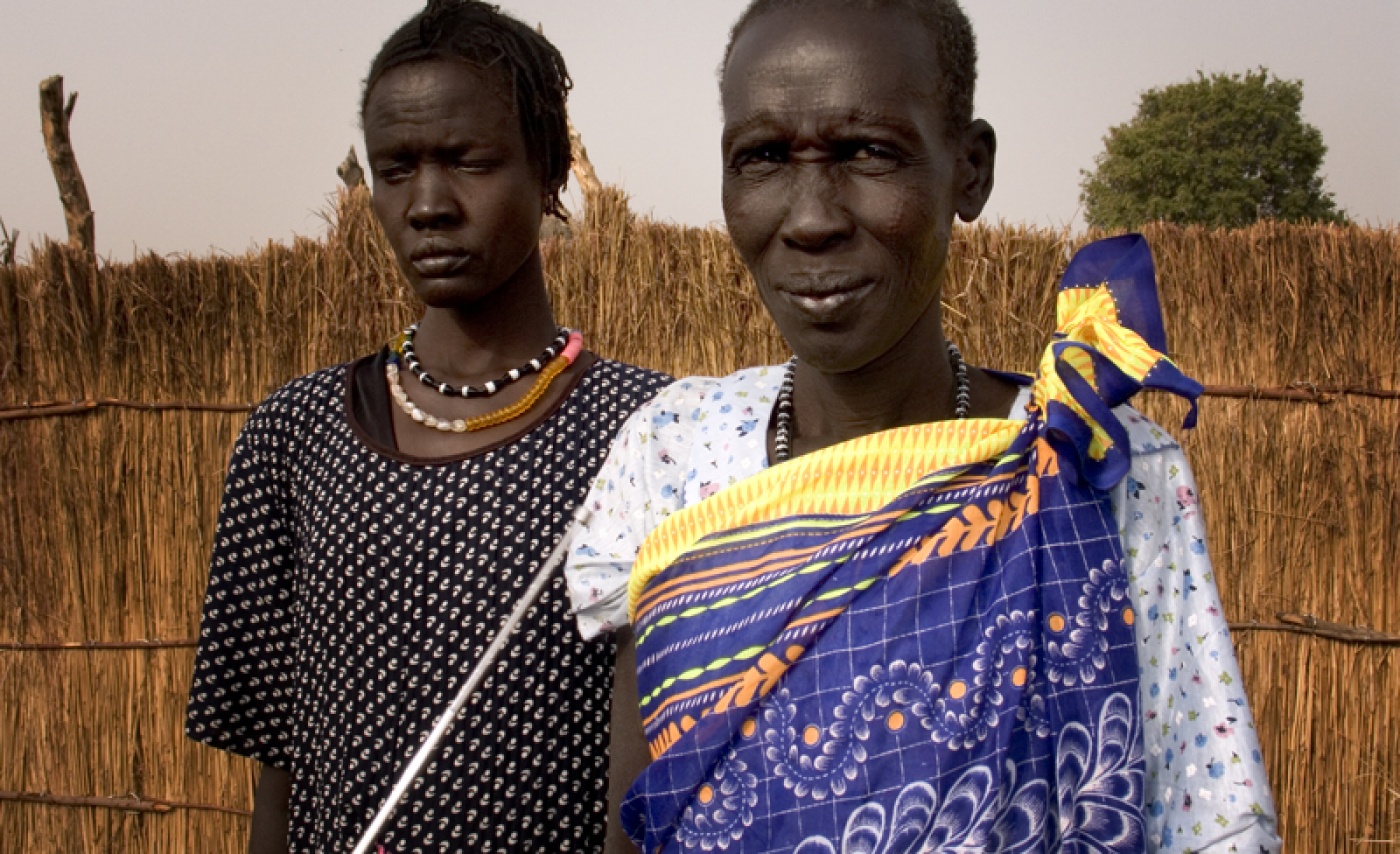
by Deep Green Resistance News Service | Feb 1, 2016 | Agriculture, Colonialism & Conquest
Featured image: Two Anuak women in the Gambella Province of Ethiopia. By Julio Garcia on March 18, 2007.
By Cultural Survival
On December 28, 2015 Ethiopia’s Agricultural Ministry revoked their contract with Karuturi Global Limited, an Indian company who in 2010 won a concession for 100,000 hectares of land to be developed for industrial agriculture for export in the Gambella region of southern Ethiopia, home to the Indigenous Anuak, Mezenger, Nuer, Opo, and Komo peoples. The Agricultural Ministry’s land investment agency cancelled the concession on the grounds that by 2012 Karuturi had developed only 1,200 hectares of land within the initial two year period of the contract.
Since 2013 the company began spiraling out of control, when it was found guilty of tax evasion in in a similar land grab venture in Kenya, and the following year had its operations was taken over by Stanbic Bank.
Karaturi’s Managing Director Sai Ramakrishna has challenged the Agricultural Ministry’s project termination in Ethiopia, telling Bloomberg Business, “I don’t recognize this cancellation,” and is seeking arbitration. If international arbitration is granted, Karuturi will advocate for the continuation of the company’s commercial agriculture plan. Ethiopian officials have dismissed their claims.
Karuturi Global’s project failure resembles that of many foreign investors who have purchased land under the Ethiopian government’s push to lease Indigenous lands to foreign investors, in what many term “land grabbing.” According to Bloomberg, none of these farms in Ethiopia have reported any success in exporting crops.
Ethiopia’s land leasing plans were described as a roadmap to development. Called “villagisation,” the plan involved removing the Indigenous Peoples who sustain themselves from their lands practising farming, hunting, gathering, and pastoralism, and grouping them into established villages, with the idea that the land would be used to produce large scale industrial agriculture to sustain the population’s food needs. Jobs would be created, turning Indigenous Peoples into wage workers who could then buy foods. But Karaturi’s plans were different–aiming to export grains for sale abroad rather than selling them locally, despite Ethiopia’s ban on the export of cereal crops.
The socio-economic transformation promised by the regional government was never realized. Rather, villagisation has meant the forced removal of Indigenous Peoples from their ancestral lands and the creation of an aid-dependant food source. Obang Metho, Anuak human rights activist from Gambella, explained in a video with local media Ethiopian Satellite Television, “This was not empty land. People have been living on this land for generations. When I grew up we didn’t have an office job to earn wages, people depend on land. Our supermarket is going to the field. The field was our bank. When you take away our lands, you are taking away our livelihood, our futures.”

An aerial view of the Dadaab Refugee Camp in Kenya where many Anuak people turned to for shelter after forced removal from Gambella. Photograph taken on November 1, 2011 by Oxfam International
On a morning in late 2010 the Anuak peoples living in the province of Gambella were met by regional government officials and soldiers. Without their knowledge or consent the Ethiopian government had sold an estimated 42% of Anuak land to foreign investors. The Anuak people were forced to leave their only known livelihoods, including essential food sources, and move to government sponsored “villages” which soon turned into refugee camps. In 2012, Human Rights Watch published its report, “’Waiting Here for Death’ Forced Displacement and “Villagization” in Ethiopia’s Gambella Region” documenting the “forcible moving tens of thousands of indigenous people in the western Gambella region from their homes to new villages under a ‘villagization’ program.”
“In their old village there was a school under a mango tree. In the new village, donor money had paid for a new school building. The children, however, were too hungry to attend, roaming instead in the forest looking for food… but now the government can show the world there is a ‘school’” –Anuak refugee displaced to the Dadaab Refugee Camp in Kenya (from The Guardian’s article, Ethiopia’s rights abuses ‘being ignored by US and UK aid agencies’.)
Since their displacement in 2010 the Anuak have become refugees – many having turned to the crowded refugee camps in South Sudan and Kenya. As a result of their forced displacement many of the Anuak, and other Indigenous Peoples of the southwest, have endured scores of human rights violations including documented cases of rape, torture, extrajudicial imprisonment and famine, while these conditions were ignored by donor agencies USAID and DfiD.
Now, Ethiopia, USAID and Dfid have a chance to right their wrongs, and return the lands to the Indigenous Peoples turned into development refugees. But the Agriculture Ministry has said that the rest of the land will return to a “land bank” for future re-investment.
The UN Declaration on the Rights of Indigenous Peoples clearly states in Article 28.1
Indigenous peoples have the right to redress, by means that can include restitution or, when this is not possible, just, fair and equitable compensation, for the lands, territories and resources which they have traditionally owned or otherwise occupied or used, and which have been confiscated, taken, occupied, used or damaged without their free, prior and informed consent.
For the survival of the Indigenous Peoples of Gambella, International aid agencies must take an active role to bring these displaced communities access to lands and a means of sustainable livelihoods.





 Keeping the spirit
Keeping the spirit Start with a small circle: each one invite one.
Start with a small circle: each one invite one.




